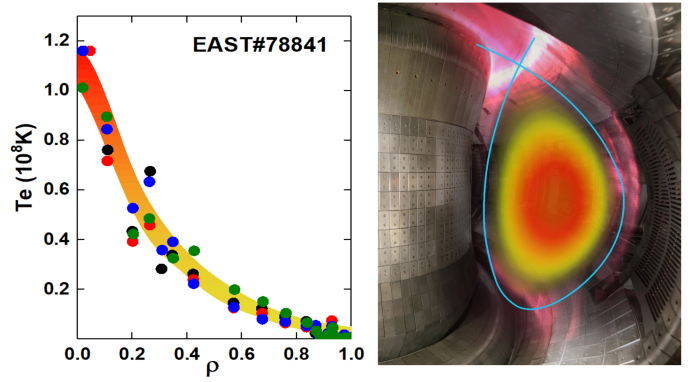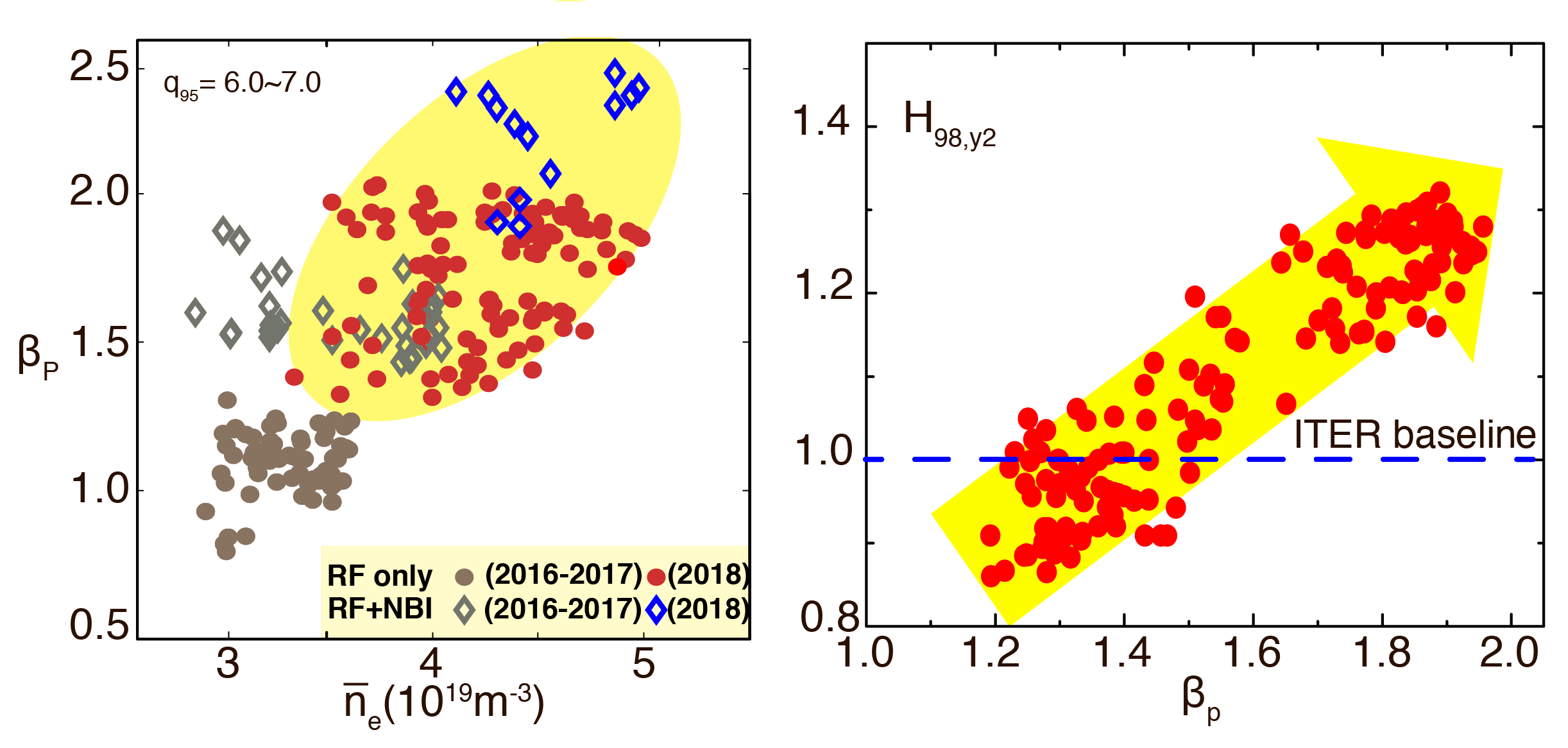Over 100 million degrees.
Experimental Advanced Superconducting Tokamak (EAST), nicknamed Chinese artificial sun, has achieved over 100 million degrees electron temperature in the core plasma in its 2018 four-month-long experiment campaign.
Collaborating with domestic and international colleagues, EAST team in Hefei Institutes of Physical Science, Chinese Academy of Sciences (CASHIPS) made significant progress along the China’s roadmap towards tokamak based fusion energy production.
By effectively integration and synergy of four kinds of heating power, namely, lower hybrid wave heating, electron cyclotron wave heating, ion cyclotron resonance heating and neutral beam ion heating, the plasma current density profile was optimized.
The power injection exceeded 10MW, and plasma stored energy boosted to 300 kJ after scientists optimized the coupling of different heating techniques, and utilized advanced plasma control, theory/simulation prediction. The electron temperature of the core plasma increased beyond 100 million degrees.
Scientists carried out the experiments on plasma equilibrium and instability, confinement and transport, plasma-wall interaction and energetic particle physics to demonstrate the long time scale steady-state H-mode operation with good control of impurity, core/edge MHD stability, heat exhaust using an ITER-like tungsten divertor.
With the ITER-like operation conditions such as radio frequency wave dominant heating, lower torque, water-cooling tungsten divertor, EAST achieved fully non-inductive steady-state scenario with high confinement, high density and high energy confinement enhanced factor.
Meanwhile, to resolve the particle and power exhaust which is of crucial importance for high performance steady state operation, EAST team has employed many techniques in controlling the edge localized modes and tungsten impurity in ITER-like operation conditions, along with active feedback control of divertor heat load.
The operation scenarios of steady-state high performance H-mode and reactor-level electron temperature over 100 million degrees on EAST offer unique contributions toward ITER, Chinese Fusion Engineering Test Reactor (CFETR) and DEMO.
These results provide key data for validation of heat exhaust, transport and current drive models, and enhance confidence in the fusion performance predictions for CFETR.
At present, CFETR physics design focuses on optimization of a third-evolution machine with large radium at 7 m, minor radium 2 m, toroildal magnet field at 6.5-7 Tesla and plasma current 13 MA.
In support of the engineering development of CFETR and a future DEMO, a new National Mega Science Project -- Comprehensive Research Facility will be launched at the end of this year.
This new project will advance the development of tritium blanket test modules, superconducting technology, reactor relevant heating and current drive actuators and sources, and divertor materials.
EAST is the first fully superconducting tokamak with non-circular cross section in the world, designed and constructed by China aiming at key science issues for the application of fusion power. Since its virgin operation in 2006, EAST has become a fully open test facility for world fusion community to conduct steady-state operation and ITER-related physics researches. (十日内)

Fig. 1 The plasma electron temperature over 100 million degrees achieved in 2018 on EAST. (Image by the EAST Team)

Fig. 2 The extension of EAST operation scenario in 2018, with the comparion of its energy confinement enhanced factor to the ITER baseline scenario. (Image by the EAST Team)
Contact:
ZHOU Shu
Hefei Institutes of Physical Science (http://english.hf.cas.cn/)
Email: zhous@hfcas.ac.cn
 Tel: +86-551-65591206
Tel: +86-551-65591206
 Fax: +86-551-65591270
Fax: +86-551-65591270
 Emai: zhous@hfcas.ac.cn
Emai: zhous@hfcas.ac.cn
 350 Shushanhu Road
350 Shushanhu Road